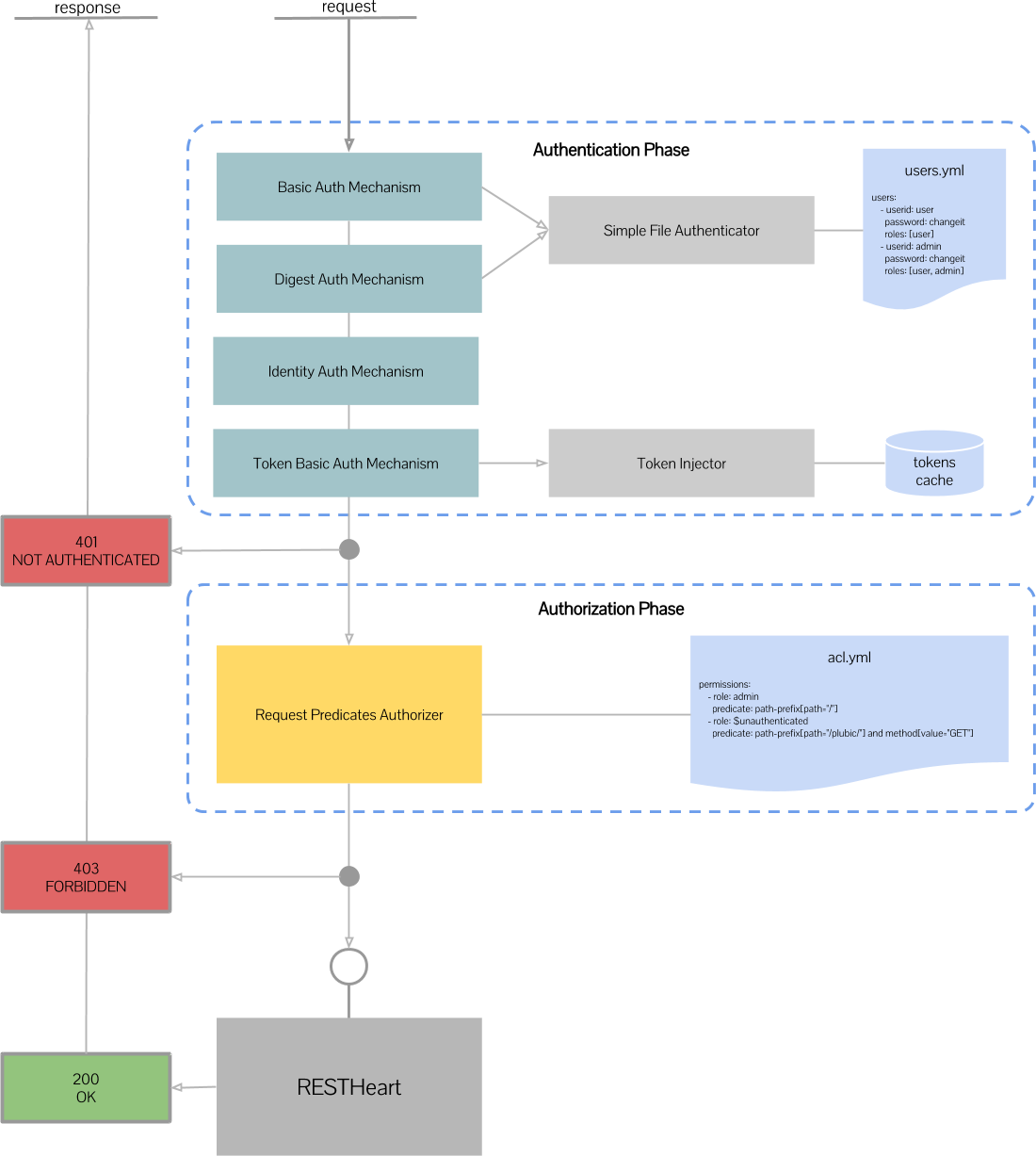Security Overview RESTHeart Cloud
Introduction
RESTHeart provides Authentication and Authorization services. It supports different authentication and authorization schemes, including users and permissions stored in MongoDB collections.
The default configuration enables mongoRealmAuthenticator and mongoAclAuthorizer. These plugins use MongoDB collections (by default /users and /acl) to store user credentials and permissions.
RESTHeart can also store users and permissions in configuration files using fileRealmAuthenticator and fileAclAuthorizer. You need to update the configuration to enable these plugins.
|
Tip
|
Watch Understanding RESTHeart security |
Understanding RESTHeart security
RESTHeart uses a pluggable architecture. It includes strong security features, and you can extend it by implementing plugins.
In RESTHeart, everything is a plugin: Authentication Mechanisms, Authenticators, Authorizers, Token Managers, and Services.

Authentication Mechanisms handle different authentication schemes. For example, BasicAuthMechanism handles Basic Authentication. It extracts credentials from request headers and passes them to an Authenticator for verification.
Another example is IdentityAuthMechanism, which binds requests to a single identity from configuration. This mechanism doesn’t require an Authenticator to build the account.
RESTHeart allows defining several mechanisms. When a request arrives, the authenticate() method is called on each mechanism until one of these occurs:
-
no
VETOERdenies it and at least oneALLOWERallows it → the request proceeds to Authorization phase; -
The list of mechanisms is exhausted → the request fails with code
401 Unauthorized.
The Authenticator verifies credentials extracted by Authentication Mechanisms. For example, BasicAuthMechanism extracts credentials as username and password. The Authenticator can check these against a database or LDAP server. Note that some Authentication Mechanisms don’t require an Authenticator to build the Account.
The Authorizer checks if the user can perform the request against an Access Control List. For example, mongoAclAuthorizer checks if the request is allowed by looking at permissions defined in a MongoDB collection.
The Token Manager generates and validates auth-tokens. When a client successfully authenticates, the Token Manager generates an auth-token returned in the Auth-Token response header. This token can authenticate further requests. This requires an Authentication Manager to handle it using the Token Manager for token validation.
A Service is a simple way to implement Web Services that expose additional custom logic.